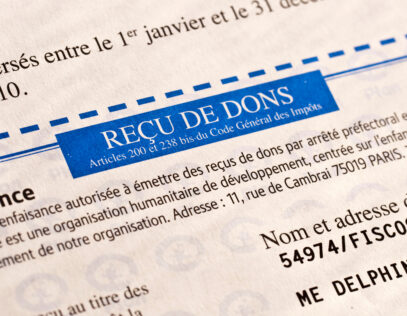Germany is a member of the OECD and its tax authority considers its transfer pricing laws and regulations to be generally consistent with that body’s guidelines. Those guidelines are not German law, however, and in many cases German law requires more detailed information than the OECD guidelines. German auditors have given themselves plenty of scope to challenge your transfer pricing arrangements. Following the draft law on implementation of the EU anti-tax avoidance directive (ATAD) (published in December, 2019 and still making its way through the Bundesrat), and the updated Administrative Principles of December, 2020, that scope has widened. If you are an MNE operating in Germany, you should know that tax authorities are already exercising their expanded powers.
New Levels of Scrutiny
Your chance of being audited as a German MNE taxpayer is high, possibly higher than ever. And if audited, you are likely to be challenged on transfer pricing. The 2019 draft law and 2020 administration principles have made audits a more worrying prospect as the burden of proof in transfer pricing cases has shifted from auditor to corporation. Notably, the range of internal documents you may be asked for is now substantially in excess of standard transfer pricing documentation, increasing your compliance burden and giving auditors further leverage throughout the process. Auditors may now request “colloquial” information on transfer pricing issues, so don’t be shocked if they ask to see your corporate emails—or if they use that email traffic to challenge your functional and risk-based analyses.
What makes you most likely to be audited in Germany? The risk is highest for MNEs who have re-located functions abroad, have intercompany transactions with low-tax jurisdictions, or are reporting losses. If you’ve outsourced a function, the auditor will take a close look at your subsequent allocation of profits. If you have loans with a related entity in, say, Ireland or the Netherlands, be prepared to defend the economic rationale of those loans, the size of the borrowing, and the leverage ratios of the borrower. And reporting local losses is, of course, always a red flag.
If you do attract an audit, expect it to be more sophisticated they you may have previously experienced. The German tax authority has recently been hiring specialized transfer pricing auditors. And these auditors are increasingly likely to have sector-specific knowledge that will enable them to pick your documentation apart. They have new technology tools to employ as well: the tax authority may ask to tap directly into your ERP systems, analyze the data they find there, and compare it to the big data from their own databases. Their conclusions may differ from yours, so make sure yours are well reasoned.
The Documentation is in the Details
Germany has accepted BEPS Action 13 and implemented most of that project into domestic law. German law also helpfully provides a list of what should be included in your master and local files. If following OECD guidelines, you are already on the right track, which makes things, on the surface, straightforward. Documentation need not be filed annually, but if the auditor asks, you have only 60 days to respond, so best practice is to keep things reasonably current. If you’ve had an extraordinary business transaction, that should be at the top of your submission. Documentation for those events, like re-location of function, needs to be contemporaneous (compiled with 6 months of the end of the fiscal year in which the transaction occurred and submitted to the auditor within 30 days of the request). Documents are required by law to be in the German language, but taxpayers can apply for an exception. In practice, documents are often submitted primarily in English, but be sure to request permission to do so in advance. You should also be prepared to translate the most relevant parts.
If audited, taxpayers should expect intercompany agreements to be requested (previously, only an overview of contracts was required). Additionally, the balance sheets of all related parties must be submitted, as well. Note also that all documentation must be deemed “usable,” which is defined by the ability of a third person (the auditor, presumably) to understand it.
There’s Method(s) in the Madness
So, documentation in Germany is relatively standard. But more may be asked: the updated Administrative Principles obligate taxpayers to, if asked, provide enough additional information to evaluate which transfer pricing method is the most appropriate (i.e. Germany has adopted the “Best Method Rule”). Previously taxpayers were only required to provide why the applied transfer pricing method was suitable. The auditor will therefore expect you to have information on hand to support various different methods. In addition to the data needed to support your own chosen method, you’ll be expected to have information on cost bases for the cost-plus method, distribution prices for the resale-minus method, contribution of pool members for the cost-pooling method, and so on. Note that comparable profits method (CPM) is forbidden by German law and that the similar transactional net margin method (TNMN), while technically allowed, is generally unwelcome.
Your easiest road may be to pre-emptively use the pricing method which auditors in Germany are most accustomed to: The comparable uncontrolled price (CUP) method. If that’s not your, um, CUP of tea, be prepared to explain why not.
This is not the only area where your wiggle room has recently narrowed. For example, the interquartile range is now effectively law in Germany. You are welcome to argue for a different approach to widen the arm’s length range, but the burden of proof will be on you. Interquartile is now the default assumption and auditors seem likely to stick to it. Other restrictive changes include the introduction of “intangible values” as a legal term and adoption of the OECD DEMPE concept.
Regarding benchmarks, locals are, of course, preferred. If locals are not available, pan-European benchmarks will be accepted. Orbis and Amadeus benchmarks may be used, but as the number of German companies in those databases are limited, you may wind up without German comparables, which is likely to be questioned by an auditor.
The Bottom Line for MNEs in Germany: Be Prepared
The audit environment in Germany is getting more challenging and transfer pricing is increasingly in the authority’s crosshairs. A wider array of data (your emails even!) is being examined by ever-more sophisticated auditors, placing greater compliance burdens on MNEs. Your audit risk will be especially high if you have reported local losses, moved a function outside of Germany, or paid interest to a related party in a low-tax domicile. The draft law of 2019 and the new administrative principles of 2020 have shifted the burden of proof to the taxpayer, so it’s never been more important to be prepared. Make sure your transfer pricing documentation tells a clear, consistent story. Any ambiguity is prone to be exploited by auditors in a way that was not the case as recently as a few short years ago.








